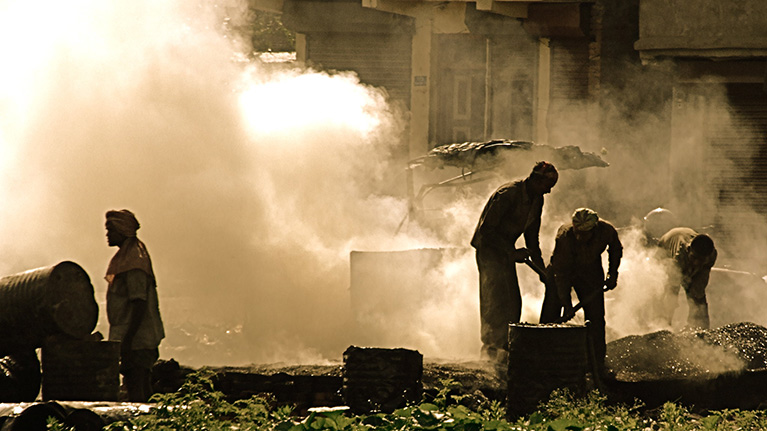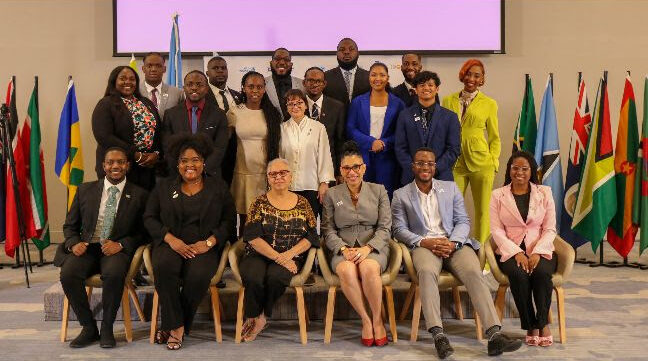By Desmond Brown
FORT-DE-FRANCE, Martinique, Jun 24 2015 – As the only country within the Caribbean Community (CARICOM) to have completed full grid integration assessments, Chief Energy Conservation Officer in the Office of the Prime Minister William Hinds said “renewable energy (RE) has beached in Barbados”.
The country has completed two grid integration assessments – one by the utility and the other by the government – and is now working in collaboration with the International Renewable Energy Agency (IRENA) to review the latter.
“Prior to 2005, the sum total of the solar systems connected to the grid stood at two, both owned by the utility,” Hinds told a conference here on Island Energy Transitions.
“We believe that Barbados, like many of the island grids, can actually move to the top of the world in terms of PV (Photovoltaics) capacity.”
Photovoltaics is the name of a method of converting solar energy into direct current electricity using semiconducting materials that exhibit the photovoltaic effect.
Barbados’ success story was the result of a deliberate strategy which included fiscal incentives whereby the government instituted a 10-year tax holiday for the installers of solar electric systems.
“What we were actually doing there is saying that the hundred years of support that we gave to fossil fuels must not now be there,” Hinds said.
He also pointed to a three percent increase in the demand for electricity over the last 20 years, noting that for the first time in 25 years the utility experienced negative growth.
“At that same time, when we looked at the importation of solar electric systems into Barbados we noticed that there is a peculiar curve. It’s exponential. We almost had a situation where we had getting out of control, an increase in the importation of solar electric systems, installing solar electric systems and some wind systems and we only had a finite grid,” Hinds explained.
Hinds also had a word of advice for Barbados’ Caribbean neighbours as they seek to boost renewable generation on their power grids.
“Establish collaboration were we politely as governments say to the utilities we have to make changes for the betterment of our citizens,” Hinds said.
“To have the knowledge at your fingertips, hire experts as consultants but also your own local people as part of your staff (and) secure the critical grid macro data from the utility.”
Power generation from solar PV has long been seen as a clean sustainable energy technology which draws upon the planet’s most plentiful and widely distributed renewable energy source – the sun. The direct conversion of sunlight to electricity occurs without any moving parts or environmental emissions during operation. It is well proven, as photovoltaic systems have now been used for 50 years in specialised applications, and grid-connected PV systems have been in use for more than 20 years.
Renewable energy experts, at a three-day meeting here, have been assessing the potential for reduced carbon emissions from the joint application of renewable energy technologies for heating, cooling, desalination and electricity production in island settings.
They are also looking at reinforcing capacity building support for islands to plan, build and operate renewable energy systems, including through the creation of training hubs.
Programme Manager for Energy at CARICOM Dr. Devon Gardener said the issue of grid integration is key to island energy systems because it is a critical plank in the planning process.
“For us to plan to introduce renewable energy systems into our generation mix, we have to understand what is possible and what is realistic within the existing grids in the various islands,” Gardener said.
“More importantly, we must know what are the costs and what are the implications of additional renewables from what may be potentially integratable into the existing grids because we can always add more than what is possible under the current paradigm and that means that it will come at an investment cost.”
CARICOM has, at the level of Ministers, approved the renewable energy targets for power generation under what’s referred to as the Caribbean Sustainable Energy Roadmap and Strategy.
“By 2017, we are supposed to have 17 percent RE, by 2022 we’re supposed to increase to 27 percent and by 2027 we are looking at 47 percent RE in our island grid systems,” Gardener said.
“What grid integration studies say about the potential renewable share that can be integrated into electricity generation in island systems… is of particular importance to us in CARICOM because we are looking at a strategy which looks to integrate 47 percent RE into our systems by 2027.”
For the Small Island Developing States (SIDS) of the Caribbean, renewable energy technologies (RETs) will become increasingly important in the face of high fossil fuel costs.
Many countries now recognise the need to move towards low-carbon, climate resilient economies, as set out in the CARICOM implementation plan for climate change-resilient development.
Many countries rely heavily on imported fossil fuels, spending an ever-larger proportion of their GDP on energy imports. Along with air conditioning, refrigeration and transportation, water heating is one of the most energy-intensive domestic activities, using roughly 2 MWh of energy per household per year.
Fortunately, the islands have access to one source of energy that is not in short supply, receiving over 3,000 hours of sunshine in a year. Barbados has capitalised on this, replacing gas and electric water heaters with solar water heaters (SWHs) at both domestic and commercial sites.



